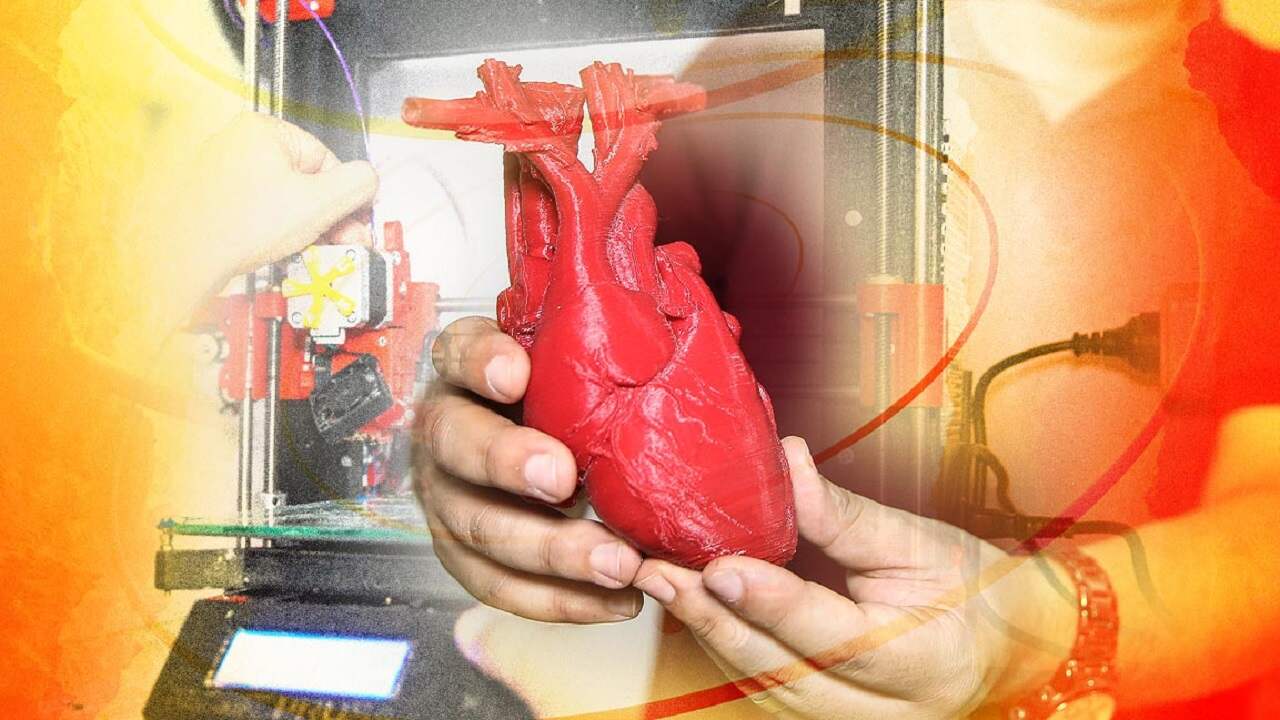- | 9:00 am
This startup is pioneering the use of 3D printing in Gaza. And it is saving lives
The story of Muhammad Abu Matar and his startup Tashkeel3D reveals how Gaza entrepreneurs never have it easy.

It could be a story of a Silicon Valley startup. Except this is not the San Francisco Bay Area. This is Gaza. Here the entrepreneurial journey is more arduous – it could be one of building, being destroyed and re-building. Muhammad Abu Matar built a 3D printer using free open source software to make life-saving medical equipment in a territory that often sees the most severe outbreak of violence.
“It has unimaginable benefits,” says the 36-year-old entrepreneur.
Last year, his firm was destroyed by an airstrike, and the damages are estimated at $150,000. The 3D machines and equipment he has been collecting piece by piece since 2006 and the products he made with the 3D printers are ruined.
“It was a huge shock. We spent years developing the company. But everything was destroyed in mere seconds,” Matar says.
A startup touted as a model for Gaza entrepreneurship is now struggling to recover as Matar sits down to talk to us.
Tight restrictions on the movement of goods, and people, have been the death of much industry here. But Matar is somewhat immune to physical barriers.
“I realized how the production chain could be significantly shortened owing to the printer’s function of making numerous products.”
It is incredible how often, in crisis, new opportunities arise. In Gaza, the lack of jobs has led many fresh graduates to start their businesses. Among the many self-made entrepreneurs in this tiny slice of land and their tales of struggle and success is the journey of Matar, a graduate of the UNRWA Training College in Gaza.
HOW IT ALL STARTED
He started with building electronic circuit boards and parts for batteries, chargers, and similar devices. “I was excited about manufacturing. Gaza used to export electronics to Egypt through the free market,” he says.
Winning $5000 prize money and a $20,000 loan in a competition meant for supporting entrepreneurial projects helped him to start Tashkeel3D in 2006. He hired three engineers soon after.
But it took him years of waiting to bring some equipment inside Gaza because of the siege.
“Obtaining equipment to build our product was an uphill road,” he says. “Some were too expensive, while some were simply unavailable.”
Besides lack of resources, Matar faced other challenges in building the 3D printer. Plastic filament, the base input for the printer design, wasn’t available in Gaza. As a result, the ingenious entrepreneur ended up building a plastic-thread machine.
The first 3D printer Matar created cost him nearly $4000. After fine-tuning the design and process, the cost was reduced to one-fourth.
“The processing unit converts the data (or image) from a programming file specific to 3D printers and then executes the printing command. Solid, multi-colored plastic microfilaments are fed into the machine, which heats them to a specific temperature so they can melt and be formed as required by each design,” he says.
APPLICATIONS IN MEDICINE AND EDUCATION
The 3D printer has applications in medical devices and a range of educational tools. It has helped Matar build various medical products, establishing associations with various NGOs, including Doctors Without Borders.
He confesses that the business fulfilled him as he watched a video clip of one of his most-used products, a tourniquet used for hemorrhage control.
“The paramedics use the tourniquet to stop bleeding while transporting patients to the hospital. Journalists have them to help themselves and others during violent outbreaks, which often happen here. It saves lives.”
Tashkeel3D also developed a 3D-printed stethoscope and a protective mask for severe burns. “We feel great pride when we see burn victims benefitting from our mask; it motivates us to continue.”
The 3D printer he developed also came to the rescue during the pandemic. In a region lacking enough personal protective equipment, initially, Matar designed a mask for doctors; it protected their faces from aerosol droplets.
Besides medical products, the startup developed educational products, including an automated robot used as an instructional tool. As a STEM instructor, Matar often comes across children experiencing difficulty understanding science course material. The “friendly robot” helps make studies fun, he says.
WALKING THROUGH CHALLENGES
The economic situation in Gaza is a big challenge—projects start in a small, local market with low purchasing power, says Yousef al-Hallaq, head of the investment readiness program Gaza Sky Geeks. “Muhammad is one of the distinguished entrepreneurs who pioneered a technological field that did not previously exist in Gaza. He is now transferring his expertise to new entrepreneurs in the field,” al-Hallaq adds.
The blockade on the Gaza Strip has caused a deficit of resources. Without adequate tools, entrepreneurs like Matar troubleshoot their problems by cloud-sourcing information on the internet. Further, due to trade regulations, suppliers aren’t easily accessible.
For Matar, walking through these challenges was rewarding until 18 May 2021, when an airstrike wrecked Tashkeel3D’s offices. It reduced the 15 years of work to rubble. Matar’s business was one of many destroyed by airstrikes last year.
He says the struggles in Gaza can feel a bit like a marathon. “What happened to us tested all principles of patience and endurance that we advocated for. We are using this destruction as an opportunity to restart.”






































